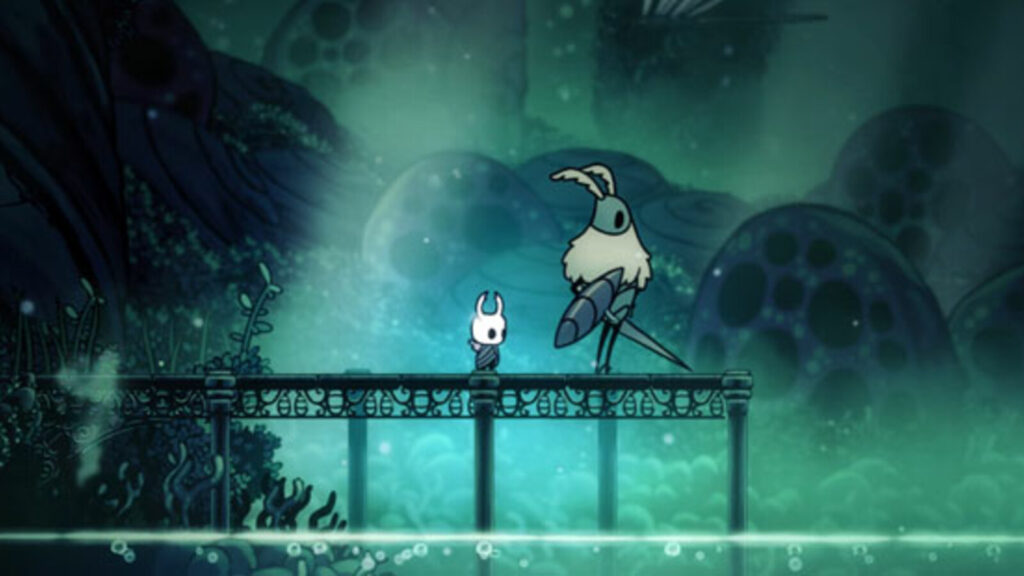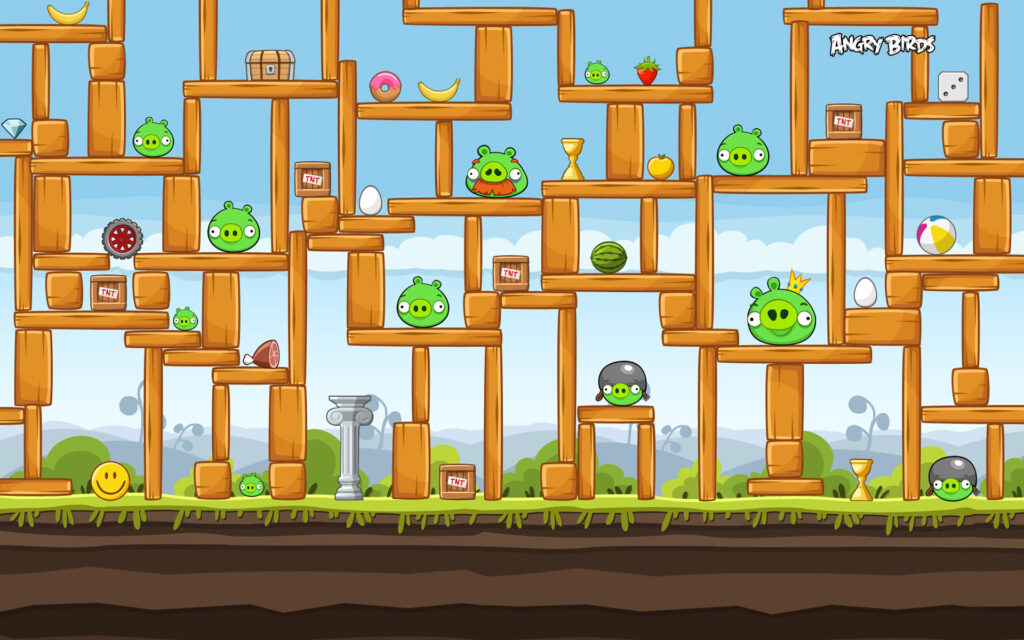In 1972, the world changed forever.
That was the year Pong was introduced. Despite its simplistic graphics and gameplay, the tennis-themed game, produced by Atari, would go on to become the first commercially successful video game. In the process, it was partially responsible for launching the video game industry as we know it.
The 5 Types Of Video Games Every Designer Should Know
In the years since the first players began pumping quarters into Pong cabinets – and despite a nasty market crash in the early 1980s – the video game industry has exploded, with its 2021 revenues hitting a mythic $180.3 billion. It has launched movies, TV shows, cartoons, sports leagues, toys, and even an amusement park with the opening of Super Nintendo World at Universal Studios Hollywood. Simply put, video games are the largest entertainment enterprise in the world, surpassing virtually every other form of media and showing no signs of slowing down as they continue to evolve, adapt, and innovate.
For the young game developer looking to join the industry, it’s vital to know the lay of the land so you can target the kind of games you want to design. What follows is a look at 5 of the biggest categories of video games being made today, along with some examples you can check out to get a sense of what they’re about.
AAA Games
The Marvel Cinematic Universe, currently the largest movie franchise going, has grossed $26.6 billion at the box office. Amazing, right? Now consider that the Call of Duty video game franchise – alone – has grossed over $30 billion. When you think of other blockbuster franchises like Super Mario Bros., Pokemon, Halo, Final Fantasy, Grand Theft Auto, or The Legend of Zelda, you can see just how massive an impact video games have on the entertainment industry. Those blockbusters make up the subset of games known as AAA Games.
With budgets often in league with the biggest Hollywood productions and revenues to match, AAA games are the industry’s bread and butter. But with the big potential for breakout success comes the equal potential for massive failure. For every Elden Ring, there’s a Cyberpunk 2077. The massive resources that are poured into these games mean that almost every title released could shut a developer down if it fails. Developing AAA games is often a precarious balance between injecting the game with a sense of artistry while satisfying the business needs of the publisher.

AAA games feature exceptional graphics and orchestral soundtracks and often tell hugely epic stories with deep character development driven by top-tier acting talent – who often provide not only voices but motion capture for the game’s characters. If you boldly want to leave your mark on the gaming public, AAA games are the way to go.
In the last decade, a market has developed for those more likely to play solitaire on the computer than the latest epic role-playing game or first-person shooter. Casual games have a simple premise and do not require significant time to play Bejeweled.
The iconic casual game is PopCap’s Bejeweled, a tile-matching puzzle game. Bejeweled is one of the first successful casual games and inspired a variety of clones. Another famous type of casual game is the hidden object game, in which a player must find various objects in a picture.
Given the ubiquitous nature of mobile gaming, casual video games (which have predominantly set up shop in the smartphone market) have attracted demographics of gamers who were previously deemed a non-target market, particularly amongst females and older gamers. Indeed, female gamers now account for nearly half of the game-playing population and the average age of gamers has risen to 30.
Casual gaming has been a big contributing factor in this trend, and the market as a whole continues to grow and turn substantial profits.
Read More: Q&A With NYFA Alum & Game Designer Grettir Ólafsson on Life After NYFA
Indie Games
If AAA games are the blockbusters of the video game industry, then indie games are the art house films. Often developed by small teams – sometimes even by a single person – indie games have exploded in popularity in the last decade because of the sheer variety and inventiveness they often display. Their growth has been aided by the proliferation of digital game delivery platforms like Steam or the various consoles’ online shops, as it’s made it much easier for these smaller publishers to get their games out into the world.

Some indie games, like Hollow Knight or Ori & The Blind Forest, have redefined already popular video game genres. Some, like Among Us, have outright created new game genres. Still others, like Minecraft, have become virtual industries unto themselves. It Takes Two, a co-op adventure game from Hazelight Studios, even earned “Game of the Year” at The Game Awards.
Developers are drawn to indie games for the freedom they offer to explore the form and tell more intimate, challenging stories to their audience. Platformer Celeste is a moving meditation on mental health; Stardew Valley eschews video game adventure conventions and instead offers gamers the contemplative life of a farmer; Hades coupled finely-tuned combat gameplay with a rich and transformative story filled with unforgettable characters from Greek mythology. If you’re looking to pour your creative heart into a project but don’t necessarily want to get bogged down by the wiles of capitalism, then this is where you should be.
Read More: NYFA Game Design Faculty: Interview With Brandii Grace
Live Service Games
One of the newer types of games on the scene, live service games aim to be “living” pieces of entertainment that grow and change over time in often-persistent online worlds. These games are massive undertakings for developers because not only are you tasked with developing the game itself but with continually providing new content to your players – some of whom may be paying a monthly fee to access the game.

Some live service games have become immediate legends, like World of Warcraft, which despite being released in 2004, still has over 8 million people logging in to play each month. Others have become legends for the opposite reason – Anthem, published by Electronic Arts, was wildly anticipated when it was released in 2019, but buggy gameplay, half-baked concepts, and a lack of new content caused it to fail, with EA pulling the plug just two years after its debut.
Therein lies one of the true terrors of working on a live service game. People can still play the original Pac-Man in various forms because it was a standalone game – but live-service games don’t enjoy the same longevity. While games like Destiny 2, Apex Legends, and Final Fantasy XIV enjoy continued success, others like Babylon’s Fall and Splitgate have been shut down and are no longer accessible anywhere. Once a company decides to shut the servers off, all goes dark.
Mobile Games
Once upon a time, you had to hook up a large, heavy (and sometimes wood-paneled!) console to your tube television set and sit within reach of your controller’s cords to stare at a pixelated and aliased signal just so you could try and stumble your way through a round of Pitfall!. Now, each of us carries a computer in our pockets with the horsepower to play all but the most resource-intensive video games, which explains the massive rise of mobile gaming over the last 15 years.

Mobile games are often designed to be quick and easy to play, with simple goals that facilitate brief gaming sessions while you’re on the go. Puzzle games are common, with Angry Birds and Candy Crush as some of the biggest successes. Many games are available through their respective mobile store for a few dollars, while others are ad-supported – though the ads sometimes become an intrusive barrier to enjoyment. The similarity in power between smartphones and video game consoles has seen a number of mobile games making the leap to home systems as well.
More recently, some mobile games have come under fire for an overreliance on so-called “microtransactions” – small purchases of items within games, which can range from simple cosmetics to customize your character all the way to bonuses and buffs that create “pay-to-win” scenarios. The recent Diablo Immortal was heavily criticized for its microtransactions, while Star Wars Commander drew fire for requiring players to wait six real-time days to upgrade units unless they chose to pay. Incidentally, Star Wars Commander has since shut down, meaning all the money spent by players eager to succeed in the game was essentially wasted.
Casual Games
Before the release of the Nintendo Wii in 2006, video games, by and large, had been the purview of hardcore gamers. The Wii’s unique motion controls – which encouraged people to get off their couches and swing their arms to play games – corralled in an entirely new type of gamer – the casual gamer. Coupled with the growth of smartphones as a gaming platform, casual games have grown in the last decade, offering options for people not interested in the 50-hour grind of a AAA game.

Casual games often have very simple objectives, or sometimes no real objective at all – they aren’t roller coasters, they’re a lazy stroll through the park. Animal Crossing: New Horizons and The Sims 4 allows you to create a character, get a job, build a house, and enjoy an entire alternative life. Party games like Super Mario Party or the Jackbox series encourage the entire family to gather around the TV to play together. A recent hit, Unpacking, is built around the simplest of concepts – unpacking some boxes and deciding the best way to put things away throughout a room.
A casual game doesn’t need a deep, involving story, advanced graphics, or challenging gameplay. It just needs a straightforward mechanic, a clean look, and easy accessibility that invites all to enjoy. As early generations of gamers advance into middle age and lose some of the hand-eye reflexes they need to succeed at bigger titles, casual games will likely become an even bigger opportunity for the intrepid game developer.
What Type Of Game Will You Develop?
Video games are the youngest entertainment medium out there, as we’ve only just crossed the 50th anniversary of Pong’s release. As advanced as games seem today, the truth is we’ve barely scratched the surface of video games as art. For the budding game developer, the only limit is your imagination. New York Film Academy’s Game Design School can unlock that imagination while helping you expand and evolve your skillset to give you the tools you need to create unforgettable virtual worlds. With that training in hand, you can answer the question… what’s next?